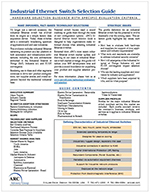




This guide will help organizations select the best Multicarrier System for their business requirements.
Multicarrier systems allow shippers to connect to multiple carriers and then tender, print compliant labeling, track, and pay using the software. In practice, most shipments will be parcel, although multicarrier solutions can also be used for courier and less-than-truckload shipments.
Multicarrier solutions greatly streamline parcel shipments. They allow for organizations to save money through better service selection, by ensuring the best carriers are selected for a shipment. They can also save money through some limited optimization capabilities and freight audit. Newer solutions have hit the market that can lead to increased ecommerce sales and support omni-channel fulfillment work flows.
This publication contains guidance, functional descriptions, specific selection criteria, market share data, and information on the market. This guide is designed to help team members find common ground with lower risk and faster time to benefit.
This selection guide is not a one size fits all approach to supplier selection. Users can select the criteria that apply to their organization and apply the appropriate weightings to criteria.
Multicarrier software spans the functional needs of the shipping department. Newer ecommerce solutions have work flows that extend out to incorporate a broader multichannel process. The selection guide helps answer key questions, such as:

For more information on this technology guide or to discuss how we can help you, please contact us.




